Since the second weekend of March, all yoga studios have been closed as a prevention against the corona virus. In addition to all the negative effects and fears, it is a huge opportunity and a step to become more independent and establish your own yoga practice! To make the transition to your own yoga practice easier, Sandro gives you simple instructions for your yoga at home. If you would rather attend online yoga classes, we have put together a few tips for you here.
When, where and how long?
When is the best time to practice?
The biggest challenge for many people is finding a fixed time to practice yoga. You shouldn't be distracted by the end of the dishwashing cycle or an important item on the shopping list. It's best to set a fixed time that has a fixed beginning and end, just like the yoga course did before. Try to be realistic. All I can say from my own battle with my inner weaker self is that the later the day, the easier it is to find an excuse for skipping the yoga session.
Personally, I was only able to overcome my inner weaker self by getting straight out of bed and onto the mat every morning. This wasn't easy at the beginning because my body didn't find powerful movements early in the morning to be the first choice. Now, after almost four years of daily yoga practice, it is one of the most beautiful moments of the day. I take time to consciously perceive my body and my breathing, stretch, sit up, activate muscle groups and come to terms with myself.
Which place is suitable?
Some people need a nice room or certain amenities to feel comfortable. If you are one of these people, then think about what framework is really important for your yoga practice and implement that. Basically you need a space of 2m by 1m and ideally a yoga mat and nothing else. The best place for your practice is where you can concentrate and focus well and where you are least distracted.
But I've also had wonderful yoga classes in hotel rooms, in the hallway at my parents' house or between the tents in the wet grass at a festival. The more limited I was, the more creative I had to be and that usually had a positive impact on my practice. Then I had to think about alternatives and try out movements and couldn't just do a program. In these moments I was completely with myself.
How long should I practice?
Be pragmatic! It's better to practice 10 minutes of concentration than to force yourself to last 90 minutes and keep sinking into daydreams. It is helpful to set either a fixed period of time or a fixed number of exercises.
I started my own yoga practice with a fixed number of 10 exercises, which also included 2 rounds of sun salutations, breathing exercises and final relaxation. If I really felt like it, I could finish it in just 30 minutes. When I didn't feel like it, I could do the same program in 10 minutes, but I always did it because I knew there were only 9 exercises left, for example.
What should my yoga session include?
1. Breathing
Conscious breathing is the foundation for a clear head and focused asana practice. Especially if you feel restless or unfocused, start your yoga practice with a breathing exercise you are familiar with from the yoga classes you have attended. Alternatively, here is a simple and effective guide that you can repeat every day, as every day is different:
- Notice the flow of breath in your body as you inhale and exhale - nostrils, throat, chest, stomach, pelvis
- Inhale from top to bottom – chest, stomach, relaxed pelvic floor
- Exhale from bottom to top - pull the pelvic floor slightly inwards, from your stomach, from your chest
- Create an even cycle – in at the top and out at the bottom and out at the bottom
- To do this, establish a fixed breathing rhythm, such as counting to 4 and inhaling and counting to 4 and exhaling (4:4) and let this circuit flow consciously for 12 breaths
- Variation I: If you feel depressed or weak, put the emphasis on the inhalation (6:4 or 8:4). If you feel restless and nervous then put the emphasis on the exhalation (4:6 or 4:8 )
- Variation II: A complete round of breathing also includes breathing pauses after inhalation and after exhalation. How does it feel to count to 2 during the break (4:2:4:2) or to let all 4 phases of breathing be the same length (4:4:4:4).
2. Warming
In yoga, the sun salutation (a sequence of vinyasas) is the means to the end of warming. A Vinyasa is a movement that balances breathing and movement. If you don't have a special sun salutation in mind, simply design one or more yourself. To do this, think about two or three positions, such as standing upright, warrior I and downward-facing dog, and try to combine them through conscious movements. There is no right or wrong, because after all the journey is the destination!
So that you can keep an eye on your breathing, synchronize the whole thing so that chest openings (such as raising your arms) are connected to an inhalation and chest restrictions (such as forward bends, twists) are connected to an exhalation. The old masters didn't do it any other way, even if they... also gave a few more thoughts about it. For everyone, fun and well-being should always be the top priority.
Personally, I now let my own body inspire me every morning. I stand on the mat, feel my breath, stretch my arms up or to the side and somehow it starts all by itself. Then you might want to. Stretching my back and going into a forward bend or a warrior twist feels good. When I need energy or want to boost my circulation, I often go up and down. It can be so simple 😊
3. Asanas
Since the physical exercises in yoga always involve the spine, the smallest yoga class contains 5 exercises/asanas: forward bend, back bend, side bend, twist and straight spine. If you have more time, you could add an abdominal exercise, an inversion pose and a balance exercise. And just like that you have put together an hour with 8 asanas.
There are various exercises and variations for each of these 8 asanas. My tip for you is to just let the name say it all. Which exercise from your yoga classes can you think of, for example, for a forward bend? Remember the instructions and build the exercise consciously. Try to gain more and more control in the posture by mentally going through all the affected body parts and changing them so that it feels good. There should never be pain in yoga! Otherwise, change something or stop practicing.
You always get the most important feedback from your breathing. This should always flow comfortably and easily in every asana. If your breathing stops or you are breathing heavily, change your posture until your breath can flow comfortably and easily again. And only then is it yoga and good for you! Trust your perception and try to listen to your body. Your body is never against you and pain is always a warning sign that you should take seriously.
4. Relaxation
At the end of every yoga class there should always be relaxation in which the energies balance out and your muscles can relax. This should take at least 2 minutes and a maximum of 8 minutes.
The easiest way is to focus on breathing in Shavasana (lying on your back with your arms next to your body, palms facing up, legs slightly wider than hip-width apart and feet falling outwards). You can mentally move from body part to body part and release each muscle as you exhale. You can also consciously mentally name the body parts from foot to head and let them go. You can certainly remember instructions from a yoga class that worked well for you.
What could such a yoga session look like?
Yoga session 10 minutes long
Breathing (1 min)
- Stand, straighten up
- 6 conscious breaths in the circuit: Inhale: chest, stomach, pelvis - Exhale: pelvic floor, stomach, chest
Warming (2 min)
- 1-2 rounds of a sun salutation you know or a sequence of several exercises
Asanas (1 minute each) with creatively flowing transitions
- Forward bend: seated forward bend
- Backbend: Cobra
- Side bend: triangle
- Rotation: Swivel seat
- straight spine: push-up
Final relaxation (2 min)
Yoga session lasting 20 minutes
Breathing (3 min)
- Sitting cross-legged or sitting on your heels
- Straighten your spine
- 12 conscious breaths in the circuit: Inhale: chest, stomach, pelvis - Exhale: pelvic floor, stomach, chest
Warming (5 min)
- The starting position is upright
- Breathe out, bringing your hands together in front of your chest.
- Inhale while lifting and stretching your arms, bringing your shoulder blades together.
- Exhale while bending your knees, leaning your upper body forward, hands next to your feet.
- Inhale while putting your right leg back, right knee to the floor, opening your chest.
- Hold your breath while putting your other leg back in a push-up position.
- Exhale, place your knees, chest and forehead on the floor.
- Inhale, lifting your chest and head into Cobra.
- Exhale while lifting your pelvis and coming up into downward-facing dog.
- Inhale, while placing your right foot forward between your hands, your left knee to the floor.
- Exhale, bend both legs forward.
- Inhale while standing up with your knees bent and your back straight.
- Exhale, lower your arms.
- Switch sides with each round
Asanas (1 minute each) with creatively flowing transitions
- Forward bend: standing forward bend
- Back bend: Bird - lying on your stomach, arms next to your body, palms facing upwards, inhaling your legs, lifting and holding your head and shoulders, the back of your hands remaining relaxed on the floor
- Side bend: Standing, stretch your arms upwards and palms together, bend your arms and upper body slightly to the left as you exhale and stretch the right side of the body, then the other side
- Twist: Crocodile - lying on your back, arms to the side, feet up and knees bent to turn to one side, shoulders stay on the floor and head turns to the other side than the knees, then switch sides
- straight spine: forearm push-up
- Abdominal exercise: Boat - sitting on the mat, straighten your upper body and lift your bent knees, balance on your butt and try to stretch your legs
- Reversal position: downward-facing dog
- Balance exercise: tree
Final relaxation (4 min)
I hope you enjoy practicing at home! Feel free to send us an email to mail[at]findedeinyoga.org . how you got along on your own. For anyone who would prefer to continue practicing with their yoga teacher at home, we have written an article about online yoga classes and why it is important to support your yoga teacher right now. Click here for the article.
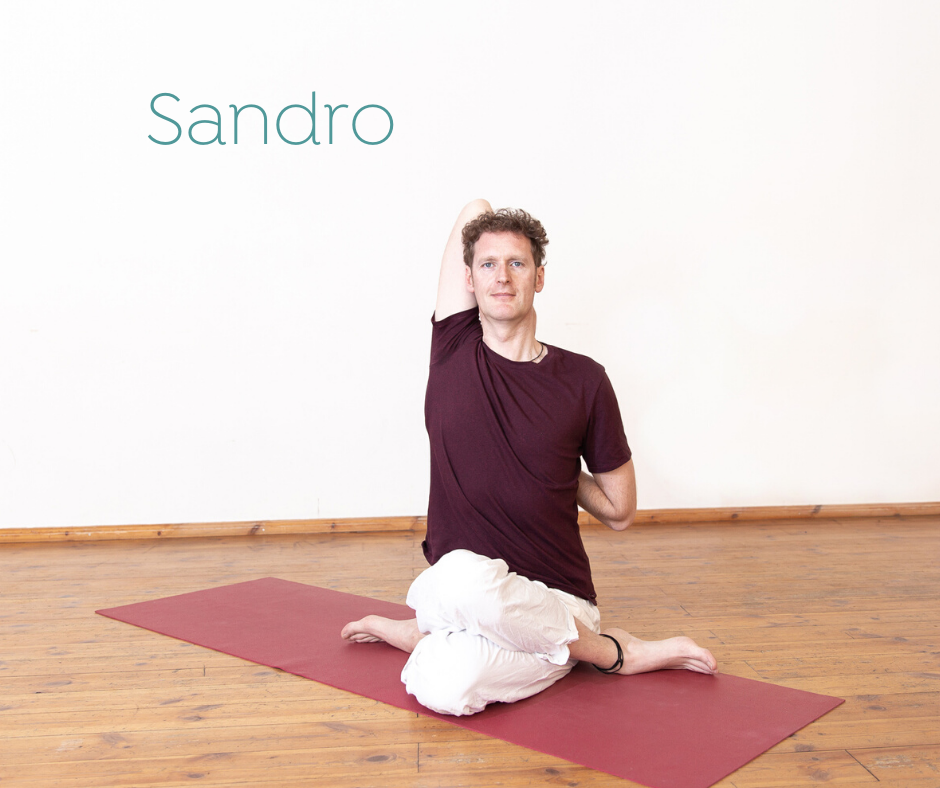 Sandro has been a yoga teacher in Berlin Neukölln for 10 years and is the former operator of the yoga platform Find Your Yoga.
Sandro has been a yoga teacher in Berlin Neukölln for 10 years and is the former operator of the yoga platform Find Your Yoga.
--------------
Text by: Sandro, former operator of Find Your Yoga
--------------
If you would also like to support people at home with their yoga and write a blog article, then send us an email to mail[at]findedeinyoga.org . We look forward to hearing from you!
If you're looking for an online yoga class, try searching with the filter "also offers online yoga classes" on Find Your Yoga .



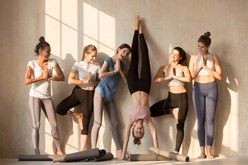
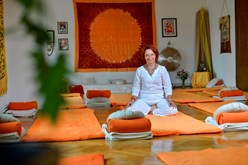



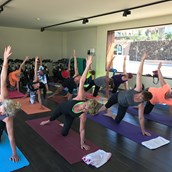
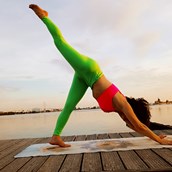

.png)